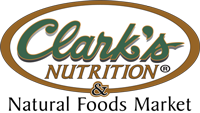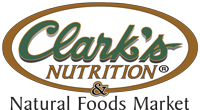Gluten Free
What does following a gluten-free diet mean? That you're embarking on an easy diet with a wide range of health-promoting effects. Instead of dwelling on what you’re giving up, consider that you’re going to enjoy a whole new world of delicious food options to meet your special dietary needs. You’ll be eating seasonally, choosing more fresh fruits and vegetables, focusing on meats, seafood, poultry, legumes, lentils, corn, and rice, and discovering fascinating ancient grains such as quinoa, amaranth, and millet. You’ll be able to eat potatoes, eggs, most cheeses, even chocolate (!)—and enjoy them without guilt because you’ll be taking good care of your body. In fact, you’ll probably end up eating—and feeling—better than ever!
Visit this page for more information about living Gluten Free
---
We carry a large variety of gluten free items, the brands listed below represent just some of the offerings we carry






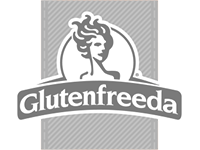





Raw Foods
“Raw” is all the rage these days, but what does it mean to eat raw? And is it possible to get enough protein and other nutrients while following a raw diet?
Raw foods are those that have not been heated above 108°F to 118°F
Raw, defined
Most raw foodists eat only plant-based (vegan) foods, including vegetables, fruits, nuts, seeds, legumes, and seaweed. Raw foods are those that have not been heated above 108°F to 118°F, depending on who you talk to. The logic behind this is that many of the nutrients in foods are extremely sensitive to heat. This is especially true of the water-soluble vitamins, like the B-vitamins, folate, and vitamin C. As Katie McDonald, a raw food chef and certified Holistic Health Coach in Rhode Island puts it, “The more you do to a food, the less it does for you.”
Raw food advocates also look to the enzyme content of raw foods, saying that cooking destroys delicate enzymes that could otherwise go toward improving the digestion of the foods you’re eating.
---
In addition to our always fresh produce, we carry many more raw foods throughout our stores. Look for these brands and our Raw Foods section for more.

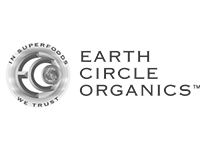

More Diets
Chili Peppers
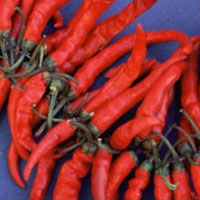 © Steven Foster
© Steven FosterParts Used & Where Grown
Originally from South America, chili peppers are now used worldwide as a food and spice. Chili peppers include cayenne, jalapeños, habanero, and other peppers characterized by their capsaicin content. The fruit is used medicinally.
- Reliable and relatively consistent scientific data showing a substantial health benefit.
- Contradictory, insufficient, or preliminary studies suggesting a health benefit or minimal health benefit.
- For an herb, supported by traditional use but minimal or no scientific evidence. For a supplement, little scientific support.
Our proprietary “Star-Rating” system was developed to help you easily understand the amount of scientific support behind each supplement in relation to a specific health condition. While there is no way to predict whether a vitamin, mineral, or herb will successfully treat or prevent associated health conditions, our unique ratings tell you how well these supplements are understood by the medical community, and whether studies have found them to be effective for other people.
For over a decade, our team has combed through thousands of research articles published in reputable journals. To help you make educated decisions, and to better understand controversial or confusing supplements, our medical experts have digested the science into these three easy-to-follow ratings. We hope this provides you with a helpful resource to make informed decisions towards your health and well-being.
This supplement has been used in connection with the following health conditions:
| Used for | Amount | Why |
|---|---|---|
Osteoarthritis | Apply 0.025 to 0.075% capsaicin ointment four times per day over painful joints | When rubbed over painful joints, cayenne extract creams containing 0.025 to 0.075% capsaicin may reduce the pain and tenderness of osteoarthritis. |
Pain | Apply 0.025 to 0.075% capsaicin ointment four times per day over painful areas | Capsaicin, an extract of cayenne pepper, appears to work by blocking pain signals and may ease many types of chronic pain when applied regularly to the skin. |
Postherpetic Neuralgia and Pain | Apply 0.025 to 0.075% capsaicin ointment four times per day over painful areas | as Cayenne Topical A component of cayenne pepper known as capsaicin can be applied as a cream or ointment to soothe the pain of postherpetic neuralgia. |
Psoriasis | Apply 0.025 to 0.075% capsaicin ointment four times per day over pain areas with unbroken skin | to relieve itching and help heal sores. Cayenne contains capsaicin, which relieves pain and itching and may help heal sores.. |
Type 1 Diabetes and Diabetic Neuropathy | Apply an ointment containing 0.025 to 0.075% capsaicin four times daily to areas of nerve pain | as Cayenne Topical Topically applied capsaicin (from cayenne) has been shown to relieve symptoms of diabetic neuropathy. |
Type 2 Diabetes and Diabetic Neuropathy | Apply an ointment containing 0.025 to 0.075% capsaicin four times daily to areas of nerve pain | as Cayenne Topical Topically applied capsaicin (from cayenne) may help relieve nerve pain. |
Anal Itching | An ointment containing 0.006% capsaicin, thinly applied three daily for 4 weeks | In a double-blind trial, topically applying capsaicin relieved chronic anal itching in 70% of patients. |
Cluster Headache | Consult a qualified healthcare practitioner | Capsaicin, a constituent of cayenne pepper, applied inside the nostrils may ease the pain of cluster headaches and reduce recurrences.
|
Obesity | 6 to 10 mg of capsinoids or 135 mg of capsaicin per day | Compounds from chili pepper have been found to slightly increase energy expenditure, fat-burning, and weight loss.
|
Rheumatoid Arthritis | Apply 0.025 to 0.075% capsaicin ointment four times per day over painful areas | A cream containing capsaicin, a substance found in cayenne pepper, may help relieve pain when rubbed onto arthritic joints. |
Athletic Performance | Refer to label instructions | Capsaicin, a constituent of cayenne, has been shown to reduce pain caused by osteoarthritis and provide relief from chronic low back pain. |
Bursitis | Refer to label instructions | Some doctors recommend using the anti-inflammatory herbs boswellia, turmeric, willow, and topical cayenne ointment for bursitis.
|
Low Back Pain | Refer to label instructions | Topical cayenne pepper has been used for centuries to reduce pain and to diminish localized pain for a number of conditions. |
Migraine Headache | Refer to label instructions | Capsaicin, the active constituent of cayenne, may be applied inside the nose as a treatment for acute migraine under a doctor’s supervision. |
Copyright © 2025 TraceGains, Inc. All rights reserved.
Learn more about TraceGains, the company.
The information presented by TraceGains is for informational purposes only. It is based on scientific studies (human, animal, or in vitro), clinical experience, or traditional usage as cited in each article. The results reported may not necessarily occur in all individuals. Self-treatment is not recommended for life-threatening conditions that require medical treatment under a doctor's care. For many of the conditions discussed, treatment with prescription or over the counter medication is also available. Consult your doctor, practitioner, and/or pharmacist for any health problem and before using any supplements or before making any changes in prescribed medications. Information expires December 2025.

